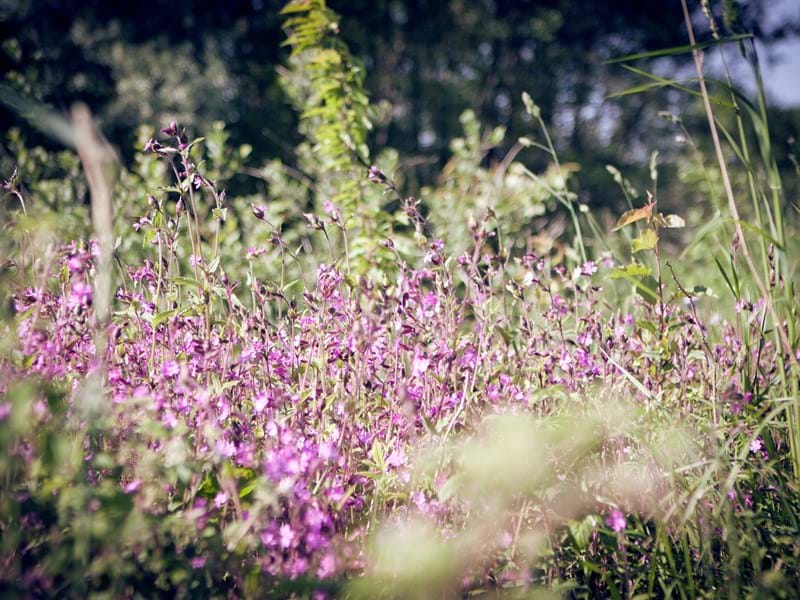The birth of the climate screen
Svensson today exports climate screens to over 130 countries. Here two of the architects behind its success, Göran Henningsson and Cees den Boer, recall how it all began in the 1970s with a load of scrap and a brilliant idea.
Welcome to Earth, the planet where the sun can shine but also burn, and sometimes hardly shows up at all (especially during winter in the far north). Rain, on the other hand, provides plants with the water and nutrients they need to thrive, but often there is either too little or too much of it. In other words, it is an uncertain world we live in. Yet being able to grow and propagate plants effectively is crucial to our survival.
“With a growing world population and the climate getting more extreme in many regions, we have to find ways to protect crops from extreme cold and heat while keeping down energy consumption,” says Cees den Boer, one of the key players in the story of how Svensson took over the world with its climate-controlling greenhouse screens.
Stubborn persistence and a little bit of luck
To start from the beginning: There have been moments in history when ingenuity and stubborn persistence have combined with pure chance to result in revolutionary discoveries. Take penicillin, for example, which is said to have come about from an unwashed laboratory dish.
In the case of Svensson and its revolutionary climate screens, it all started with waste. “It was actually a series of completely unexpected events that started it all,” says Göran Henningsson, the man responsible for developing what was to become a highly successful export product.
This takes us back to the energy crisis of the 1970s and the Svensson factory in Kinna, where large amounts of waste were being accumulated in the production of certain curtains. What to do with it all? “We are talking several tons,” Henningsson says. “We tried making shopping bags from it, but that didn’t make any money. Then we thought about using the fabric to reinforce lawn turf, but a local gardening expert told us that wouldn’t work. You make curtains, he said, why not make curtains for greenhouses?”
Through a contact at the Swedish University of Agricultural Sciences in Alnarp experiments started on an insulating material that would save energy without shutting out too much precious light and create the ideal conditions for crops to grow.
In 1977, Henningsson presented the solution: the knitted energy-saving screen, which could be pulled over the crops from under the glass roof and then folded back when it wasn’t needed. At the beginning of the 1980s, Svensson made another breakthrough in the development of climate screens: strips of aluminium and plastic film knitted together. This improved the ability to regulate temperature while minimising the risk of crop-destroying condensation.
In time Svensson would go on to develop a range of climate screens, with hundreds of varieties adaptable to almost every crop and climate. The Eighties were an eventful decade. In 1982, Svensson established its site in Holland, the promised land of horticulture, a country seemingly covered in cultivated land and uninsulated glasshouses. It was a market ripe for resource-saving climate screens – and Svensson could reduce heating costs by up to 70%.
"With climate screens, you can grow tomatoes in the Sahara"

The first head of the Dutch operation, Cees den Boer, says: “I was a country boy who had studied to become a construction engineer and started working with climate screens. The reason we were so successful from the beginning was that we could deliver the best climate screens and meet the demands and needs of growers.
But first and foremost, we owed our success to the fact that people liked doing business with us. Even our competitors loved us! The close relationships we built with greenhouse builders and installers was, and still is, a key factor in our success.”
Den Boer is almost 80 now but still remembers clearly the days when together with Göran Henningsson and Ivan Ludvigson he used to start the measuring and confectioning machines in the old warehouse in Zuidland, a small town in the province of South Holland.
He recalls how in 1984 drama struck when a neighbouring property to Svensson suddenly went up in flames and the fire spread, destroying all their equipment in its wake. “That time we were lucky,” he says. “We quickly came across new machines that were not too expensive and were soon up and running again.”
But most of all, den Boer remembers all the times that grateful customers have called him because Svensson climate screens have saved their crops and prevented their harvests from being destroyed when freezing temperatures set in.
“With climate screens, we can grow tomatoes in the Sahara,” he says. It is an impressive legacy that Göran Henningsson and Cees den Boer have created. Today, more than 20,000 hectares of Svensson greenhouse screens hang around the world.








